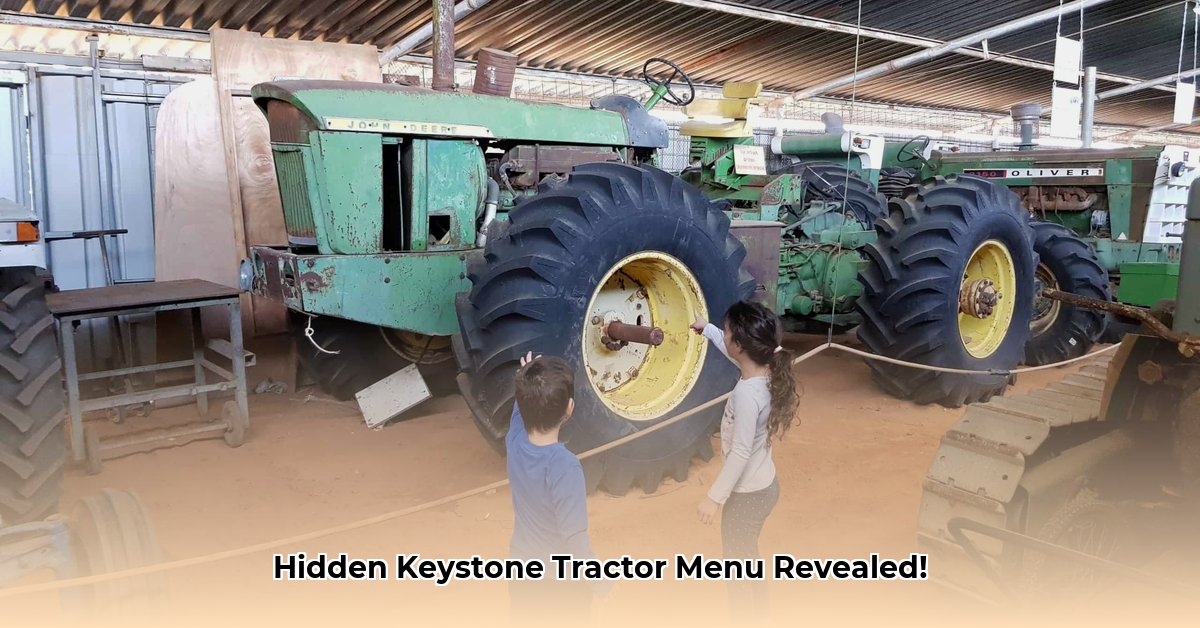
Tractor Museum Restaurant Menu: A Detailed Look and Actionable Ideas
The Keystone Tractor Works restaurant menu presents a unique opportunity: a culinary experience steeped in history. However, a closer examination reveals areas for improvement that could significantly boost customer satisfaction and revenue. This analysis details both the menu's strengths and weaknesses, offering actionable recommendations to enhance its overall appeal. For menu inspiration, check out this sample menu.
Breakfast: A Strong Foundation, Yet Underdeveloped
The breakfast menu boasts clear pricing, a definite plus. However, the descriptive text is disappointingly sparse. Imagine encountering "pancakes" without a tantalizing description of fluffy texture, luscious toppings, or even the type of cheese! More detailed descriptions, coupled with information on portion sizes, would empower customers to make informed choices. A simple upgrade in descriptive writing would significantly improve this section.
Lunch: Diverse Offerings, Untapped Potential
The lunch menu's variety is a significant strength, appealing to a wider customer base. The inclusion of sandwiches, burgers, and heartier entrees is smart, maximizing potential sales during peak hours. But is the restaurant fully leveraging this diversity? We'll explore this later.
Menu Pricing and Information: Critical Gaps
The menu’s pricing is inconsistent; some side dishes surprisingly cost more than main courses, potentially alienating customers. Furthermore, the complete absence of dietary information (vegetarian, vegan, gluten-free options) is a major oversight, excluding a significant portion of the potential market. This is a critical area needing immediate attention.
Menu Descriptions: The Power of Evocative Language
The menu's current language is functional but lacks the evocative power to entice diners. Instead of simply listing ingredients, descriptions should paint a picture, creating a desire for the food. For example, the "Keystone Signature BBQ Sandwich" could be transformed: "Slow-smoked pulled pork, simmered in our signature tangy BBQ sauce, piled high on a toasted brioche bun." This detail makes the dish more appealing.
Benchmarking Against Competitors: Learning from Success
A review of competitors, such as the Keystone Grill, reveals the power of leveraging online reviews. Platforms like Restaurant Guru showcase how highlighting positive customer feedback on specific dishes (e.g., "famous omelets" or "juicy steaks") can build a strong reputation. The Keystone Tractor Works restaurant could benefit significantly from this marketing strategy.
Operational Efficiency: Addressing Potential Bottlenecks
Reports of a 15-20 minute wait for fried chicken suggest potential bottlenecks in kitchen workflow. Addressing this is crucial for improving customer experience and staff morale. An efficient kitchen is essential for a successful restaurant.
A Three-Step Plan for Menu Enhancement
This plan outlines short and long-term strategies to improve the Keystone Tractor Works restaurant menu.
1. Quick Menu Refresh (Short-Term):
- Conduct a thorough cost-benefit analysis of every menu item, potentially removing underperforming dishes.
- Rewrite menu descriptions using vivid, sensory language to increase appeal.
- Immediately begin promoting signature dishes through targeted social media and other channels.
2. Continuous Customer Feedback (Long-Term):
- Implement a system (e.g., online surveys, comment cards) to gather regular customer feedback.
- Conduct a detailed menu engineering analysis to identify the most profitable and popular dishes.
3. Targeted Marketing Campaigns (Long-Term):
- Develop specific marketing strategies targeting various customer demographics (families, health-conscious individuals, seniors, etc.).
How to Improve Restaurant Menu Descriptions to Increase Sales
Transforming the Keystone Tractor Works menu requires more than just listing ingredients; it demands crafting compelling narratives. The following strategies provide a roadmap for menu description enhancement, directly impacting sales.
Sensory Language: Instead of just "steak," use "a sizzling 12-ounce ribeye, expertly seared to perfection." Engage all five senses to create a craving.
Storytelling: Connect with your audience emotionally. Describe “Grandma’s Apple Pie” as a cherished family recipe, evoking nostalgia and warmth.
Strategic Word Choice: Employ evocative adjectives ("succulent," "luscious") and strong verbs to create a unique impact.
Brevity: Keep descriptions concise (20-30 words). Customers scan, they don't read lengthy paragraphs.
Visual Appeal: High-quality food photography is essential for both print and online.
Pricing Strategies: Subtly downplay pricing, perhaps by omitting dollar signs, and placing less emphasis on cost than on the description.
Menu Engineering: Optimizing menu placement ensures high-profit items are prominently featured.
A/B Testing: Regularly experiment with different descriptions to identify which resonate most with customers.
Consistent Brand Voice: Develop a unique brand voice to build brand recognition and loyalty.
By implementing these recommendations, the Keystone Tractor Museum restaurant can transform its menu into a powerful tool for attracting and retaining customers, ultimately leading to increased revenue and a strong brand reputation.